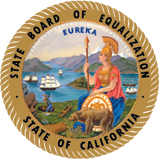Lesson 11: Derivation of Overall Rates [OARs] from Sales and by Band of Investment (The Income Approach to Value)
Appraisal Training: Self-Paced Online Learning Session
Check Your Knowledge
- A duplex sells for $175,000. Based on the buyer’s calculations, the NIBR is $15,670. What is the overall rate? Round to four decimals places.
Solution:
Overall Rate (OAR) = Net Income Before deducting Recapture (NIBR) ÷ Sale Price
$15,670 ÷ $175,000 = .0895
- A warehouse sells for $1 ½ million. Based on the buyer’s calculations, the NIBR is $116,640. What is the overall rate? Round to four decimal places.
Solution:
Overall Rate (OAR) = Net Income Before deducting Recapture (NIBR) ÷ Sale Price
$116,640 ÷ $1,500,000 = .0778
- An office building sells for $9 million. Based on the buyer's calculations, the NIBR is $871,247. What is the overall rate? Round to four decimal places.
Solution:
Overall Rate (OAR) = Net Income Before deducting Recapture (NIBR) ÷ Sale Price
$871,247 ÷ $9,000,000 = .0968
- A retail store sells for $2 ½ million. Based on the buyer’s calculations, the NIBR is $232,348. What is the overall rate? Round to four decimal places.
Solution:
Overall Rate (OAR) = Net Income Before deducting Recapture (NIBR) ÷ Sale Price
$232,348 ÷ $2,500,000 = .0929
- Assume the following about a sale of a single-story retail store that has an original date of construction of 1928. There has been some subsequent and minor remodeling. The Replacement Cost New [RCN] is $1,400,000. Given the information presented herein, derive an overall rate from the sale of the property.
- The confirmed sale price was $1,825,000.
- The buyer's anticipated gross income was $200,000. The actual income is $200,000 and the economic rent is forecasted as $240,000.
- Vacancy and collection losses experienced in the neighborhood are approximately 5 percent of the potential gross income. The buyer also anticipated 5 percent vacancy and collection losses.
- The operating expenses, both anticipated and economic, are $18,000 per year. This includes insurance, maintenance, and allowances for replacements, but does not include ad valorem property taxes.
- The anticipated property taxes are $20,000.
- The buyer believes that the land itself is worth $1,000,000.
- The remaining economic life is estimated to be 25 years.
Solution:
Overall Rate = Net Income Before deducting Recapture ÷ Sale Price
- The subject property has an economic net income before recapture and taxes of $107,080. It is improved with a 15 year old building that has a RCN of $748,000. The remaining economic life is estimated to be 30 years. The land to building ratio is approximately one-to-one (1:1). The tax rate is $1.50 per $100 assessed value, and the assessment ratio is 100 percent.
Typically, properties of this type are purchased with a 25 percent down payment and financed with one or two monthly payment trust deeds.
Investors anticipate a cash flow rate [Re] of 10 percent on and of their investments.
First trust deeds carry a 10 percent interest rate. Owners of this type of property can borrow up to 65 percent of the property's value on the first trust deed. First trust deeds are written to be fully amortized in 30 years.
Second trust deeds, when they are written, normally carry a 12 percent interest rate and the payments are for the interest amount only.
Determine an overall rate using the above information. Round to three decimals.
Solution:
- You have been given the assignment of appraising a single tenant free standing retail building, built in 1975, that has transferred ownership between partners (non sale transfer). The transfer was determined by your transfer unit to be a 100 percent change in ownership.
The subject property is located in a community that has experienced little sales activity for a long time, and you determine that the sales comparison approach would not be appropriate due to lack of data. Given the extent of depreciation and the need to estimate a land value, you also think that the cost approach would not produce a reliable indicator of value.
However, you discover that the building was leased to a new tenant just before the change in ownership, and you think to yourself, "I have an income stream; if I had an overall rate to capitalize that income, I could use the income approach." You decide to develop an overall capitalization rate using the band-of-investment method.
You call several lending institutions to find out under what terms they would lend on the subject property. You find that lenders would be willing to finance 65 percent of the value of the property with a monthly payment loan, for 20 years, at an annual interest rate of 10 percent.
You call a friend who works for a commercial brokerage office. In talking with him and his colleagues, you determine that investors anticipate a cash flow rate [Re] of 15 percent for a property of this type, location, and age.
Given the above information, what is the overall rate by the band-of-investment method?
Round to four decimal places.
Solution:
The band-of-investment rate is a weighted average between the mortgage investment component and the equity investment portions of the property. The cash flow requirement for the debt segment is simply the total requirement to service the debt, including the principal payments as well as the interest. The equity requirement should reflect the cash flow rate (Re) that will satisfy an equity investor in the current market. Therefore:
